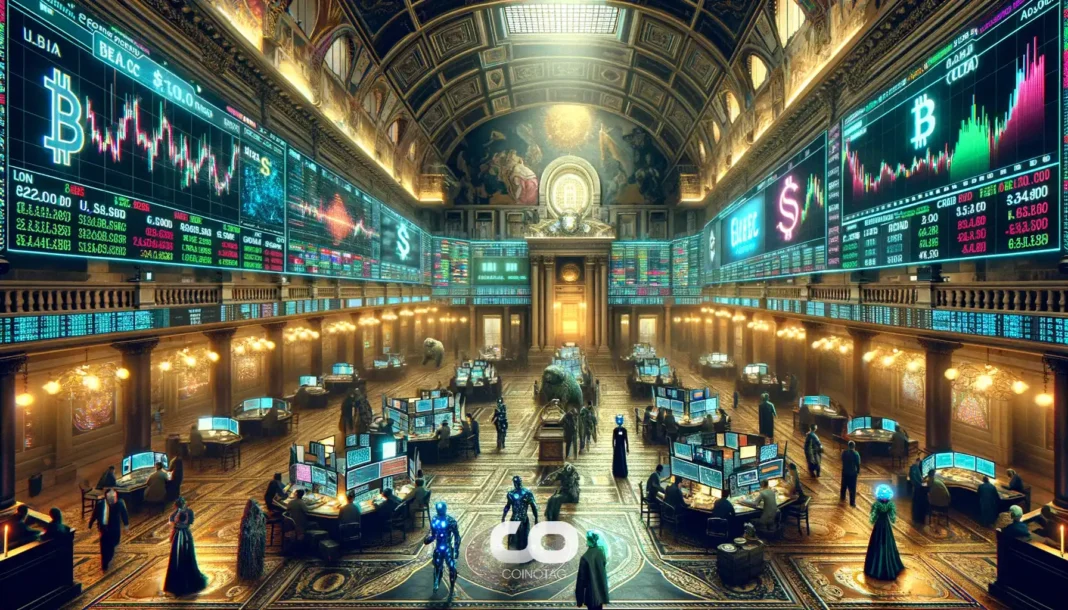-
The recent sharp decline in Ethereum’s price has left investors reeling, as the cryptocurrency plunged to $2,368, triggering massive market liquidations.
-
The turmoil in the crypto market was exacerbated by geopolitical tensions, particularly U.S. tariff changes, impacting investor sentiment across the asset class.
-
According to Ben Zhou, co-founder of Bybit, the *real total liquidation* across the crypto market could exceed $8 billion, reflecting a broader market condition of uncertainty.
This article explores the recent volatility in Ethereum’s price and its implications for the broader crypto market, highlighting significant liquidations and market sentiment.
Ethereum Plummets: A Look at the Market’s Reaction
Ethereum, the second-largest cryptocurrency by market cap, witnessed an alarming downward movement, trading at a low of $2,368 on Monday. This decline marked a staggering 17.8% drop in a single day, largely driven by external pressures including new U.S. tariffs instituted by President Trump. The aftermath was swift and harsh, with the crypto market experiencing over $2.3 billion in liquidations across 738,000 traders within 24 hours, highlighting the volatility that has returned to the crypto space.
Impact of Liquidation on Traders
Data from CoinGlass revealed that long traders faced the heaviest consequences, incurring losses totaling $1.9 billion and representing 84% of the overall liquidations. Within this framework, Ethereum long positions were hit particularly hard, amounting to $473 million of the total liquidations. Min Jung of Presto Research underscored that Ethereum’s performance has deviated significantly compared to other major cryptocurrencies, such as Bitcoin and Solana, depicting a market trend that appears increasingly unfavorable for ETH holders.
The Role of Geopolitical Factors
An analysis of the broader environment indicates that the crypto market’s turbulence is intertwined with current geopolitical dynamics, notably Trump’s tariff announcements. The implementation of 25% tariffs on imports from Canada and Mexico, alongside a 10% tariff on China, could signal inflationary pressures that complicate the fiscal landscape. Jack Tan, a co-founder of crypto exchange WOO X, emphasized that these conditions render crypto assets less effective as short-term hedges against market volatility.
The Broader Market Sentiment and Future Outlook
As Ethereum faced its largest single-day decline since May 2021, market sentiment has shifted sharply towards caution, with the Fear and Greed Index indicating a sharp rise in panic among investors. Analysts from QCP Capital noted that current market behavior suggests reactive shifts driven by wider asset reallocations rather than isolated events affecting cryptocurrencies. This sentiment often heralds potential buying opportunities in times of elevated fear, reflecting a historical pattern observed in past market cycles.
The Volatility Metrics Surge
The volatility surrounding Ethereum reached unprecedented levels during this tumultuous trading session, with metrics showing its one-day at-the-money volatility skyrocketing from 34% to 184%. Deribit’s ETH DVOL index, which assesses expected price movement, also rose significantly. Such volatility surges typically indicate an underlying anxiety in the market as traders scrambled to mitigate exposure to potential losses.
Long-Term Considerations Amid Short-Term Noise
Despite the immediate turmoil, it is essential for investors to maintain focus on long-term fundamentals. The price action of cryptocurrencies tends to experience cycles, influenced both by macroeconomic factors and broader adoption trends within the space. As the crypto infrastructure continues to mature, market participants must remain cognizant of evolving dynamics and take a strategic approach towards asset allocation.
Conclusion
The recent fluctuations in Ethereum’s price underscore the delicate balance within the cryptocurrency ecosystem, influenced by both internal market conditions and external geopolitical factors. As investors navigate through this period of uncertainty, the emphasis should remain on informed decision-making and vigilance amid volatility. While challenges remain, understanding the forces at play can provide a clearer pathway for future investments.






